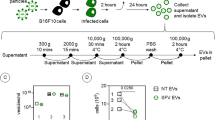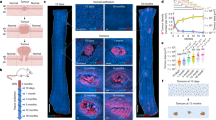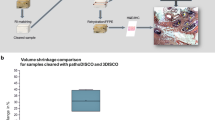Abstract
A SIMPLE and reliable technique has been evolved for preparing freshly collected ascites tumour cells for electron microscopy1. It makes use of the fact that when such cells are incubated under appropriate conditions and are brought into contact with ‘Formvar’-coated slides, they change shape within a few minutes of gaining a grip on the ‘Formvar’. The change is from the round form of the free dispersed single cells to a spindle form, and an early stage in the transformation consists of the cells spreading widely and becoming extremely thin. Ascites tumour cells spread thinly in this way are very suitable for electron microscopy; they can be fixed over osmium vapour and transferred easily to electron microscope specimen grids with samples of the ‘Formvar’ to which they adhere2.
This is a preview of subscription content, access via your institution
Access options
Subscribe to this journal
Receive 51 print issues and online access
$199.00 per year
only $3.90 per issue
Buy this article
- Purchase on SpringerLink
- Instant access to full article PDF
Prices may be subject to local taxes which are calculated during checkout
Similar content being viewed by others
References
Epstein, M. A., Exp. Cell Res. (in the press).
Epstein, M. A., J. Roy. Micro. Soc. (in the press).
Porter, K. R., Claude, A., and Fullam, E. F., J. Exp. Med., 81, 233 (1945). Claude, A., Porter, K. R., and Pickels, E. G., Cancer Research, 7, 421 (1947).
Epstein, M. A., Ann. Rep. Brit. Empire Cancer Campaign, 29, 59 (1951).
Author information
Authors and Affiliations
Rights and permissions
About this article
Cite this article
EPSTEIN, M. Site of Virus-like Particles in Rous Fowl Sarcoma Cells. Nature 176, 784–785 (1955). https://doi.org/10.1038/176784a0
Issue date:
DOI: https://doi.org/10.1038/176784a0
This article is cited by
-
Intra-cellular Identification of the Rous Virus
Nature (1956)



